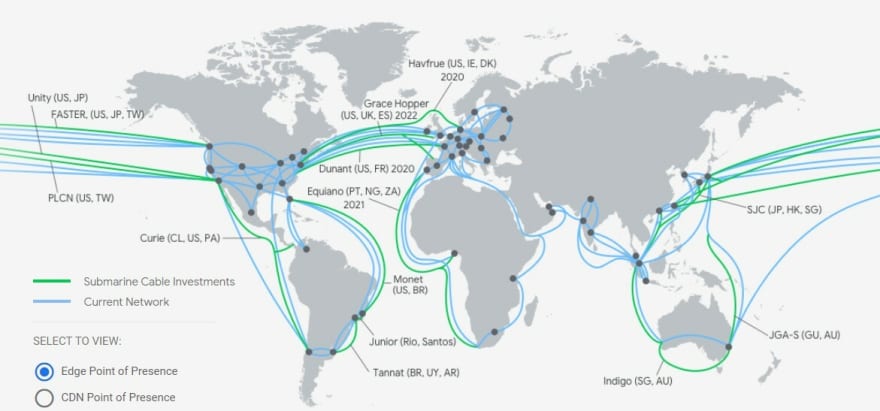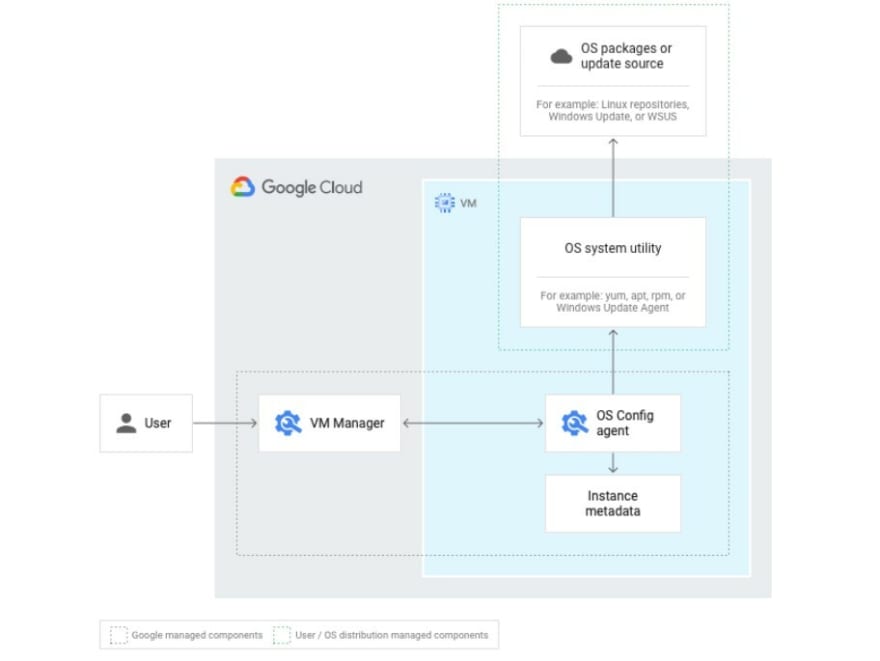Hello my dear readers!!! Hope you're doing well and getting ready to read my yet another tech blog and this time we are into the cloud technologies...
I am going to take you through this Google Cloud journey as a step by step and I will also be learning along with you, so let's kick start our learning journey together.. :)
Regions & Zones
Basically GCP provides 200+ services. And it is the cleanest cloud in the industry ever. Google Cloud protects your data, applications, infrastructure, and customers from fraudulent activity, spam, and abuse with the same infrastructure and security services Google uses.
Google Cloud’s networking, data storage, and compute services provide data encryption at rest, in transit, and in use. Advanced security tools support compliance and data confidentiality.
Below are the statistical information about the regions, zones,
and it's network as of now.
Google Compute Engine
In corporate data centers, applications are deployed to
physical servers.
Where do you deploy applications in the cloud?
1. Rent virtual servers
2.Virtual Machines - Virtual servers in GCP
3.Google Compute Engine (GCE) - Provision & Manage Virtual Machines
Compute Engine
Secure and customizable compute service that lets you create and run virtual machines on Google’s infrastructure.
Based on our requirements we can choose which type of compute engines from below types :
Predefined machine types: Start running quickly with pre-built and ready-to-go configurations.
Custom machine types: Create VMs with optimal amounts of vCPU and memory, while balancing cost.
Preemptible machines: Reduce computing costs by up to 80% with affordable short-term instances.
Confidential computing: Encrypt your most sensitive data while it’s being processed.
Rightsizing recommendations: Optimize resource utilization with automatic recommendations.
Let's look the below features provided by the compute engine based on OS, memory, costing, security, pricing etc,.
1. VM Manager
VM Manager is a suite of tools that can be used to manage operating systems for large virtual machine (VM) fleets running Windows and Linux on Compute Engine.
Fig : VM Manager architecture overview
2. Confidential VMs
Confidential VMs are a breakthrough technology that allows you to encrypt data in use—while it’s being processed. It is a simple, easy-to-use deployment that doesn't compromise on performance. You can collaborate with anyone, all while preserving the confidentiality of your data.
3. Live migration for VMs
Compute Engine virtual machines can live-migrate between host systems without rebooting, which keeps your applications running even when host systems require maintenance.
4. Sole-tenant nodes
Sole-tenant nodes are physical Compute Engine servers dedicated exclusively for your use. Sole-tenant nodes simplify deployment for bring-your-own-license (BYOL) applications. Sole-tenant nodes give you access to the same machine types and VM configuration options as regular compute instances.
5. Custom machine types
Create a virtual machine with a custom machine type that best fits your workloads. By tailoring a custom machine type to your specific needs, you can realize significant savings.
6. Predefined machine types
Compute Engine offers predefined virtual machine configurations for every need from small general purpose instances to large memory-optimized instances with up to 11.5 TB of RAM or fast compute-optimized instances with up to 60 vCPUs.
7. Preemptible VMs
Low-cost, short-term instances designed to run batch jobs and fault-tolerant workloads. Preemptible VMs provide significant savings of up to 80% while still getting the same performance and capabilities as regular VMs.
8. Instance groups
An instance group is a collection of virtual machines running a single application. It automatically creates and deletes virtual machines to meet the demand, repairs workload from failures, and runs updates.
9. Persistent disks
Durable, high-performance block storage for your VM instances. You can create persistent disks in HDD or SSD formats. You can also take snapshots and create new persistent disks from that snapshot. If a VM instance is terminated, its persistent disk retains data and can be attached to another instance.
10. Local SSD
Compute Engine offers always-encrypted local solid-state drive (SSD) block storage. Local SSDs are physically attached to the server that hosts the virtual machine instance for very high input/output operations per second (IOPS) and very low latency compared to persistent disks.
11. GPU accelerators
GPUs can be added to accelerate computationally intensive workloads like machine learning, simulation, and virtual workstation applications. Add or remove GPUs to a VM when your workload changes and pay for GPU resources only while you are using them. Our new A2 VM family is based on the NVIDIA Ampere A100 GPU. You can learn more about the A2 VM family by requesting access to our alpha program.
12. Global load balancing
Global load-balancing technology helps you distribute incoming requests across pools of instances across multiple regions, so you can achieve maximum performance, throughput, and availability at low cost.
13. Linux and Windows support
Run your choice of OS, including Debian, CentOS, CoreOS, SUSE, Ubuntu, Red Hat Enterprise Linux, FreeBSD, or Windows Server 2008 R2, 2012 R2, and 2016. You can also use a shared image from the Google Cloud community or bring your own.
14. Per-second billing
Google bills in second-level increments. You pay only for the compute time that you use.
15. Commitment savings
With committed-use discounts, you can save up to 57% with no up-front costs or instance-type lock-in.
16. Container support
Run, manage, and orchestrate Docker containers on Compute Engine VMs with Google Kubernetes Engine.
17. Reservations
Create reservations for VM instances in a specific zone. Use reservations to ensure that your project has resources for future increases in demand. When you no longer need a reservation, delete the reservation to stop incurring charges for it.
18. Right-sizing recommendations
Compute Engine provides machine type recommendations to help you optimize the resource utilization of your virtual machine (VM) instances. Use these recommendations to resize your instance’s machine type to more efficiently use the instance’s resources.
19. OS patch management
With OS patch management, you can apply OS patches across a set of VMs, receive patch compliance data across your environments, and automate installation of OS patches across VMs—all from a centralized location.
20. Placement Policy
Use Placement Policy to specify the location of your underlying hardware instances. Spread Placement Policy provides higher reliability by placing instances on distinct hardware, reducing the impact of underlying hardware failures. Compact Placement Policy provides lower latency between nodes by placing instances close together within the same network infrastructure.
Compute Engine pricing
Pricing for Compute Engine is based on per-second usage of the machine types, persistent disks, and other resources that you select for your virtual machines. If you have a specific project in mind, use the pricing calculator to estimate cost.
Okay so, this must be more than enough to kick start our exploration in the cloud console here Console 🎉🎉.
Thank you so much for sticking around and holding on to the end.
Until next time!






Top comments (0)